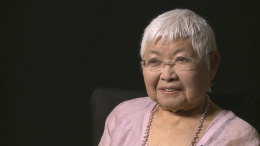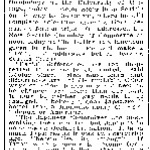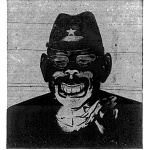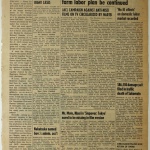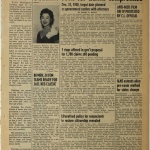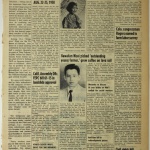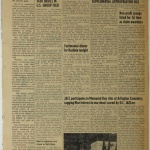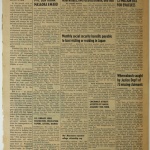Model minority
The idea that Japanese Americans and other Asian Americans are a model minority aroused great controversy during the 1960s. On the one hand, white commentators heaped praise on Japanese Americans for their collective educational attainment, economic achievement, law-abiding behavior, and high moral character. On the other hand, conservative commentators on race relations and critics of remedial state intervention, used the model minority discourse as an ideological club to be wielded. In response, Japanese American activists denounced the notion of the "model minority myth" which they argued was built on a distorted and exaggerated concept of Japanese American success and was used to denigrate other communities of color for their purported failure to pick themselves up by their bootstraps.
Historical Roots
The roots of the model minority discourse were established earlier in the twentieth century. As the rise of industrialization and economic growth drew an unprecedented wave of working-class immigrants to the nation's burgeoning cities from the 1880s to 1920s, politicians and elites debated whether the "new" immigrants (primarily Eastern and Southern Europeans) could assimilate into the traditional Anglo-Saxon stock. In response to nativism, proponents of a liberal concept of citizenship and national belonging advanced the idea that America was a "melting pot" that could both welcome the newcomers and thrive as a land of opportunity. For the "new" immigrants from Europe, assimilation was both a barometer of success and a requirement for national inclusion. However, Asian immigrants were deemed "unassimilable," excluded from the right to become citizens and ultimately the right to immigrate to America. Although the Nisei possessed birthright citizenship, they were likewise deemed "unassimilable" and marked for exclusion from the body politics alongside African Americans and other persons of color. Hence, the pre-World War II case for overcoming discrimination was intertwined with the case for proving fitness for citizenship and seeking allies among white proponents of liberal assimilationism—liberal because they opposed the harshest and most overt forms of racial discrimination and assimilationist because they believed the children of immigrants needed to give up their parents' culture to become fully American. This was in a nutshell the political agenda of the Japanese American Citizens League (JACL).
In a contradictory manner, the events of World War II both nullified Japanese American claims to citizenship and boosted Nisei claims to be model citizens. While the drive for mass incarceration was pushed by racist agitators and political demagogues, the administration of the concentration camps was largely carried out by liberal assimilationists. War Relocation Authority (WRA) director Dillon S. Myer actually believed the forced relocation process would help the Nisei by ridding them of their Japanese cultural influences and teaching them American principles of governance. Myer used the expanded legal and ideological power of the government during the war to mold the Nisei into disciplined patriotic subjects, but he used the same powers to try to sway the public to view the Nisei as assimilated model citizens. In an analogous manner, the military recruited the Nisei to serve in the war, sometimes drafting them from behind barbed wires against their will and often sending them on perilous missions. In return, U.S. military and government officials trumpeted stories of Nisei heroism and patriotism with the JACL and other Japanese American community voices joining them in chorus. As President Truman stated while honoring Nisei veterans, "You fought, not only the enemy, but you fought prejudice, and you've won." [1]
Neither the WRA nor the military can be judged to have had completely altruistic motives. The WRA's practical concerns were maintaining order in the camps and releasing those screened as "loyal" back into the general population. Moreover, Myer's belief in assimilationism and desire to exhibit leadership led him to pursue social engineering with a missionary zeal. At the same time, the U.S. government was deeply concerned by Japan's efforts to highlight the mass incarceration and the history of anti-Japanese racism in America in its propaganda campaigns, especially as Japanese leaders cloaked their expansionist motives to colonize Asia in the garb of fighting white supremacy and western colonialism. Hence, the United States made use of Nisei soldiers for its own propaganda purposes, deliberately placing them into segregated units to maximize their visibility and showcase their loyalty to America and its version of democracy. Such transnational concerns continued to color the treatment of Japanese Americans during the cold war era. With Japan now a subordinated ally but the United States still concerned about winning hearts and minds throughout Asia, Congress granted the Issei the right to naturalization under a provision of the McCarran-Walter Act of 1952 while the civil rights of Japanese Americans became increasingly protected by the courts and legislators. In concert, popular depictions of Japanese and Japanese Americans shifted during the cold war from the bucktoothed savages of the war to the domesticated and feminized images of graceful geishas and faithful war brides.
The "Model Minority" in the 1960s
Domestic social and political concerns also gave rise to the model minority image of Japanese Americans. As hundreds of thousands of African Americans and Mexican Americans migrated to the cities of the North and West in search of work and opportunity, the quest for civil rights began to erode the discriminatory barriers and measures that had protected white privilege. With fears of the yellow peril lessening during the postwar era, white opponents of racial integration focused their attention on black and brown communities. Although Japanese Americans continued to endure various forms of prejudice, many escaped the harsh level of segregation, discrimination, and police abuse that inner-city Black and Mexican Americans were subjected to. "A lot of us are congratulating ourselves on working for and securing wide acceptance in the community at large," stated a Nisei protestant minister in the early 1960s. "But I suspect that we have been bailed out by the Negroes. They moved in and frightened the whites, who then found that we Japanese weren't so bad after all. They could stop hating us and start hating the Negroes." [2]
Arguably, the first fully realized representation of Japanese Americans as a model minority was published in a 1966 article that University of California sociologist William Petersen authored for the New York Times Magazine. Citing a mix of history, statistics (on education, crime, and life expectancy), and presumably shared cultural traits, Petersen sought to demonstrate that Japanese Americans had risen from the depths of exclusion and internment to a level of accomplishment that well surpassed that of non-Asian minority groups. They did so, he claimed, by avoiding the sense of anger and resentment that had befallen other aggrieved groups who became "problem minorities." In the age of the Great Society, Petersen further declared that Japanese Americans had achieved a "remarkable record" of unparalleled achievement "by their own almost totally unaided effort"—in other words, without the aid of state programs activists demanded to counter racism and poverty. "Even in a country whose patron saint is the Horatio Alger hero," he concluded, "there is no parallel to this success story." [3]
Japanese American Response
Some Nisei embraced this new level of societal recognition as a fulfillment of their long quest for tolerance and acceptance as Americans. S. I. Hayakawa , the linguist who served as president of San Francisco State College during the ethnic studies strike of 1968–69 and was later elected to the U.S. Senate as a Republican, embodied the model minority ideal of advancement and assimilation. However, the progenitors of the Asian American movement rejected liberal concepts of Americanism. In his 1970 review of Nisei: The Quiet Americans, written by the JACL's Bill Hosokawa , Yuji Ichioka argued that the JACL's strategy of promoting civil rights through assimilation was out-of-sync with the radical and confrontational politics of the time. Ichioka wrote of the book:
It appears, ironically, at the very moment when Sansei are asking: what have we been integrating into? Into a nation conducting a politically and morally bankrupt war against Vietnamese people in the name of freedom and democracy? A nation bent on exterminating militant Black leaders? A nation which is moving to the extreme right in the name of law and order? A nation in which the so-called "American Dream" has turned out to be a violent nightmare? His theme is totally out of touch with the hard realties of the time. In 1969, "Americanism" still basically means racism, superpatriotism, and rightwing politics. [4]
While the model minority discourse originally linked Japanese and Chinese Americans, it has since been used to characterize post-1965 Asian immigrant and refugee communities in the United States too. It remains a point of contention within Asian American communities as children grapple with parental expectations and societal norms. It is a source of friction between communities of color with some Asians upholding the conservative policy implications of model minority ideology and some non-Asians resenting narratives of Asian American bootstrap success. However, exposing and resisting the model minority myth remains just as crucial to Asian American empowerment and social consciousness. As such, model minority discourse continues to serve as a source of political debate about the place of Asian Americans within U.S. society.
For More Information
Ichioka, Yuji. "Book Review, Nisei: The Quiet Americans ." In Gidra (January 1970) and reprinted in Roots: An Asian American Reader , edited by Amy Tachiki, et al. Los Angeles: UCLA Asian American Studies Center, 1971.
Kurashige, Scott. The Shifting Grounds of Race: Black and Japanese Americans in the Making of Multiethnic Los Angeles . Princeton: Princeton University Press, 2008.
Lee, Robert G. Orientals: Asian Americans in Popular Culture . Philadelphia: Temple University Press, 1999.
Petersen, William. "Success Story, Japanese-American Style." The New York Times Magazine , Janurary 9, 1966.
Shibusawa, Naoko. America's Geisha Ally: Reimagining the Japanese Enemy . Cambridge: Harvard University Press, 2006. https://archive.org/details/americasgeishaal00shib_0
Footnotes
- ↑ "President Truman Addresses Japanese-American Troops," Universal Newsreel, New York, NY: NBC Universal, July 18, 1946. https://archives.nbclearn.com/portal/site/k-12/browse/?cuecard=1356 .
- ↑ Quoted in Scott Kurashige, The Shifting Grounds of Race: Black and Japanese Americans in the Making of Multiethnic Los Angeles (Princeton: Princeton University Press, 2008), 245.
- ↑ William Petersen, "Success Story, Japanese-American Style," The New York Times Magazine , Janurary 9, 1966, 21.
- ↑ Yuji Ichioka, "Book Review, Nisei: The Quiet Americans ," in Gidra (January 1970) and reprinted in Roots: An Asian American Reader , eds. Amy Tachiki, et al. (Los Angeles: UCLA Asian American Studies Center, 1971), 221.
Last updated May 29, 2020, 5:42 p.m..

 Media
Media
